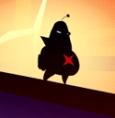Central Blue
Posts: 695
Joined: 8/20/2004
Status: offline

|
quote:
ORIGINAL: vicberg
Guys,
I have to ask this question. In Jan, 1942, my opponent has just cross from Ichang east with 4000 AV. It's a stack of 30 units, actuall only 27, 3 more are still crossing. That's more than I have (10 divs) in the entire northern china area PLUS he has another stack of 27 north of Nanyang. Something doesn't seem right with that.
What changes were made to China in this scenario? Were they bumped up? More supply and/or replacements?
I can understand an attack like this in 1944 (possibly 43), but no friken way in Jan 42.
I think this has more to do with the fact that the Chinese might have been able to seek to clinch with the Japanese more than they may have in real life because they were distracted by their internal political considerations geared to the expectation that Japan would lose the war; so they had to maneuver and preserve forces accordingly.
With the elimination of "Death Star" artillery, and the absence of political division, there are more opportunities for the Chinese to make use of their weight of troops to bog the Japanese, even though they can't fight like Patton or Guderian.
Chinese supply is not quite so critical as it will become once the supply route from Rangoon is cut, and before the air supply route is up and running. Even then, I think there is room for them to clinch defensively, if not offensively. And with the judicious use of political points, they are not entirely without good leaders, and the surviving units will only get tougher.
I suspect that we will see more of this in all scenario versions where house rules prevent early strategic bombing, as the Allied player has little to lose and much to gain by grappling the Japanese well forward of what conventional wisdom seems to dictate.
But hey, I have only practiced against the AI. So consider the source. 
_____________________________
USS St. Louis firing on Guam, July 1944. The Cardinals and Browns faced each other in the World Series that year 
|
 Printable Version
Printable Version












 New Messages
New Messages No New Messages
No New Messages Hot Topic w/ New Messages
Hot Topic w/ New Messages Hot Topic w/o New Messages
Hot Topic w/o New Messages Locked w/ New Messages
Locked w/ New Messages Locked w/o New Messages
Locked w/o New Messages Post New Thread
Post New Thread